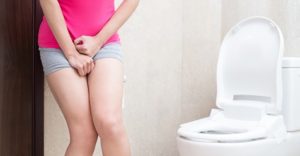
Urinary Incontinence
Loss of bladder control is twice as likely to affect women than men, with the most common types of urinary incontinence that affect women being urge incontinence/overactive bladder and stress incontinence which may be due to pregnancy, childbirth and menopause making it more likely. However, urinary incontinence is not a normal part of aging, and it can typically be treated.
Urinary incontinence in itself is not a disease, rather a symptom of another problem such as weak pelvic floor muscles, urinary tract infections, certain medications, diabetes, stroke, multiple sclerosis, an enlarged prostate, childbirth, and menopause. In addition to this condition some women may also have other urinary symptoms such as pressure /spasms in the pelvic area the create a strong urge to urinate; going to the bathroom more than usual( 8+ times during the day or 3+ times at night); and urinating while sleeping.
“Silence around bladder health has made the topic taboo. We often ignore our bladders, as long as they don’t give us any trouble. And when women do experience bladder problems, we often feel too embarrassed to get help…Taking care of your bladder is a way of loving yourself.” — Tamara Bavendam, M.D., M.S., Program Director, Women’s Urologic Health, National Institute of Diabetes and Digestive and Kidney Diseases.
1 out of 2 women and 1 out of 4 men are estimated to suffer from urinary incontinence symptoms in America, according to the Urology Care Foundation. If you are one of these people and the fear of leaks prevents you from doing things that you enjoy, perhaps it is time to think about getting this condition treated. Do not be embarrassed to talk to a medical professional about this common condition, as there are treatment options designed to help you.
There are a few steps that are generally recommended to try and treat urinary incontinence which are fairly simple, and for many women can make the incontinence issue go away completely or help to make leaks smaller and less frequent at the very least. These steps might include doing Kegel exercises, training your bladder, losing weight, changing eating habits, quitting smoking, and treating constipation.
LEARN MORE AT:
https://worldhealth.net/news/urinary-incontinence/?fbclid=IwAR1nx3PKpCJ5M7iIhEKquFwuB-ohrSoDtI3z4F55wRekovsiBAraQOhZHe0




